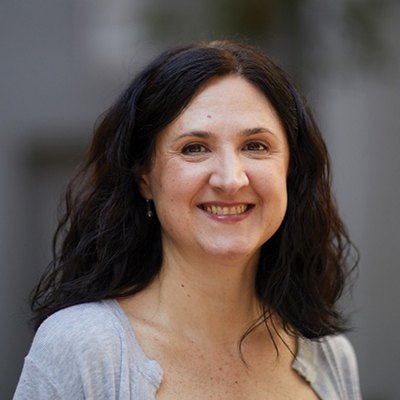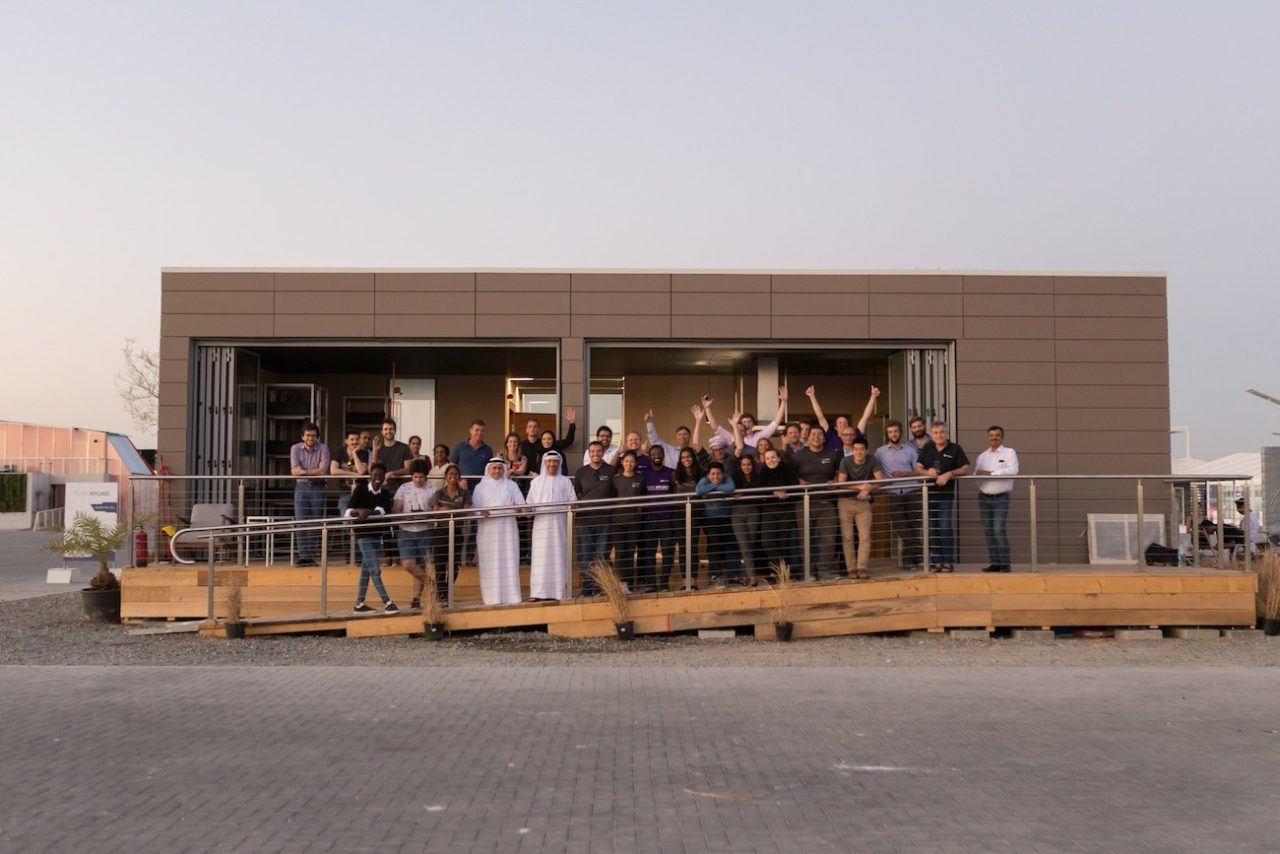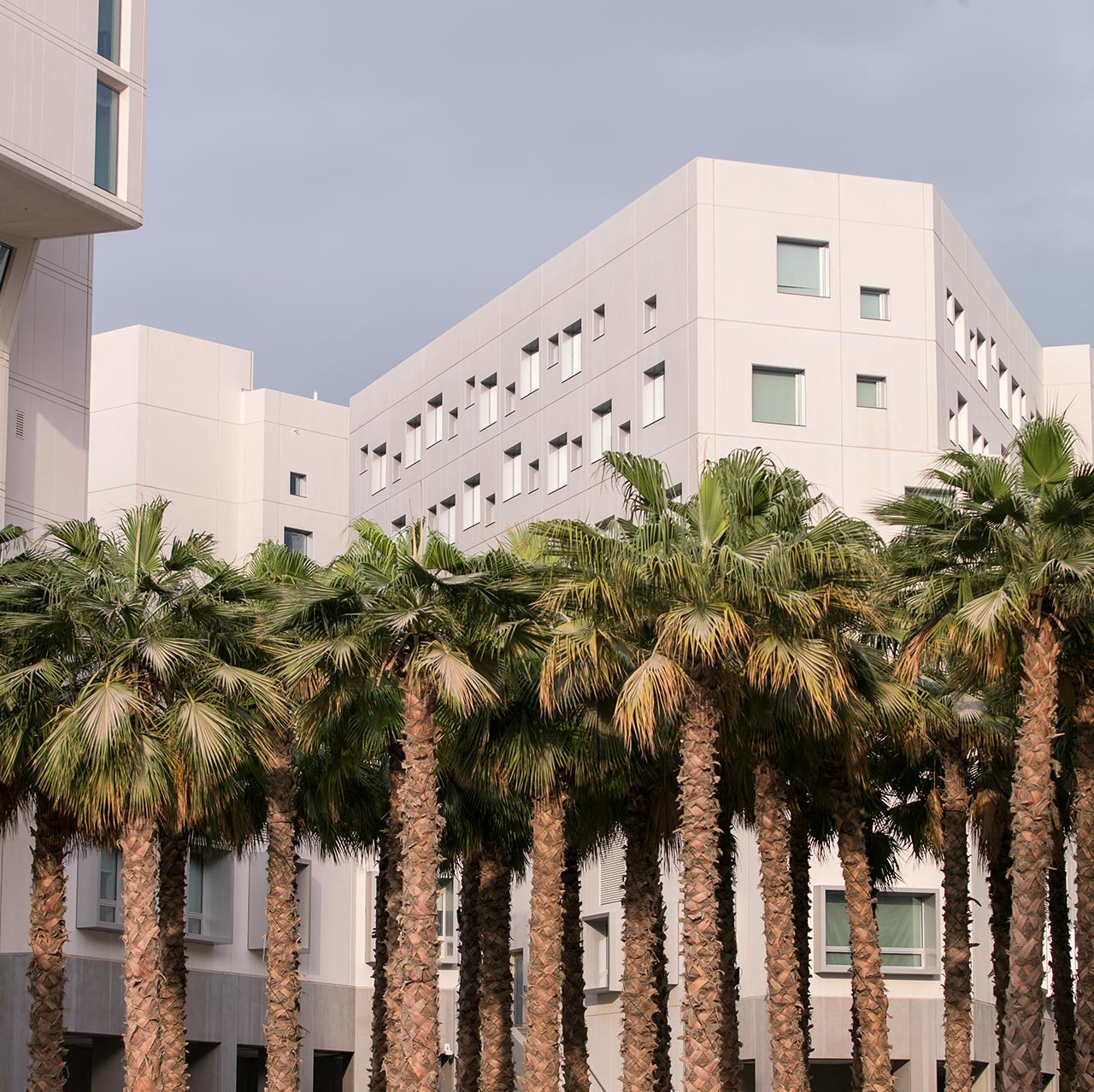Published January 07, 2020
Discover the Engineering Design Studio at NYU Abu Dhabi
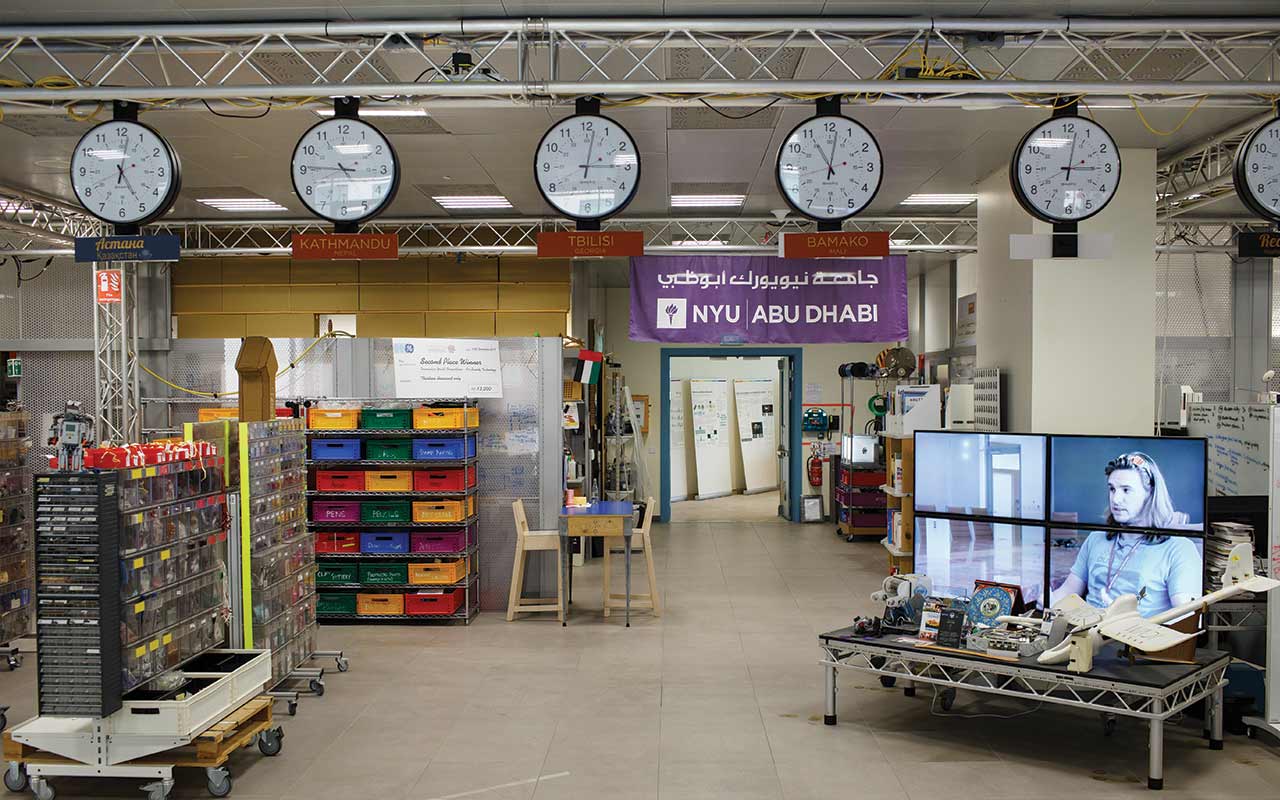
How the Engineering Design Studio—and Its Mascot Cat—Became a Symbol of Ideological Debate and Student Engagement
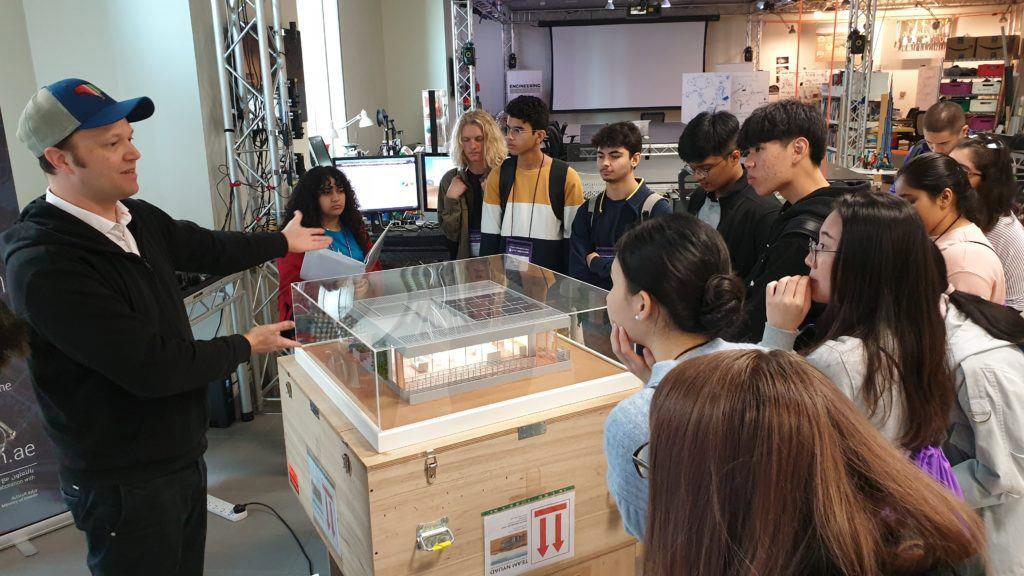
A couple of weeks ago, Lecturer of Engineering Design Matthew Karau and I chatted about what makes the Engineering Design Studio (EDS) a unique place on campus —and beyond. We also reflected on how “Streetcat,” a beloved local feline, began to stand for freedom of thought.
How It All Started
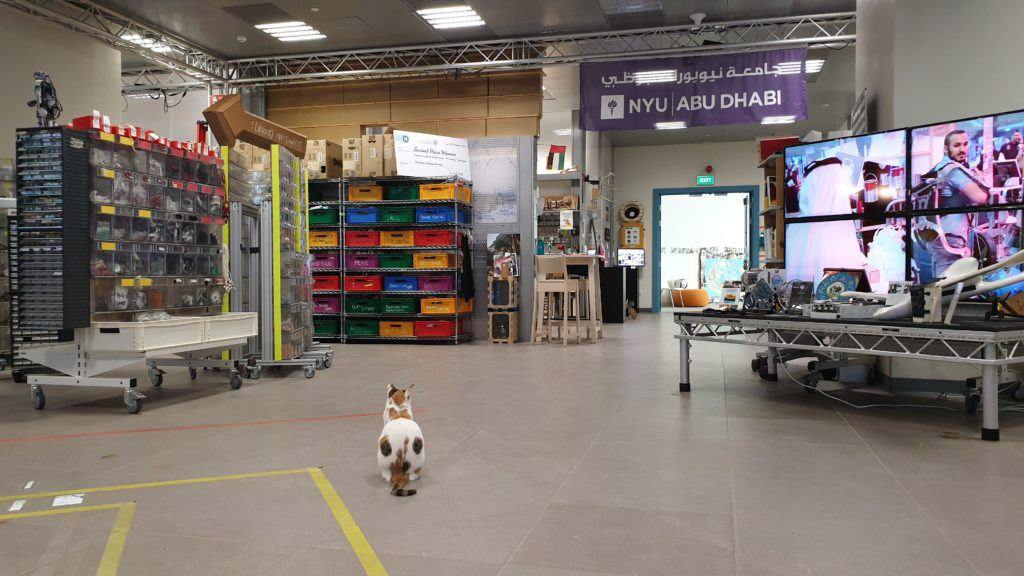
In 2013, NYU Abu Dhabi asked Matthew Karau and Vice Provost for Entrepreneurship Ramesh Jagannathan to create “a space for students to do big things” on its newly built Saadiyat campus. The pair originally co-opted what could have been a chemistry lab to establish the Engineering Design Studio. The first usable lab space on campus, the EDS started its activities during the very first semester of class. Streetcat was not yet a team member. She came to the studio in 2016 as a rescue after having had a bit of a rough summer. This adventurous cat became the emblem of the EDS soon after that.
Making It Your Own

NYU Abu Dhabi students from across all years organically find their own place at the Engineering Design Studio. Encouraged to work on projects in their spare time, students visit the EDS at any hour of the day. They may come and go, depending on their interests. Most importantly, they connect with other people. They freely debate ideas with each other over lunch or a freshly brewed cup of coffee. Meanwhile, faculty members are there to guide them but not direct.
The Permanent Resident

With her sleeping box, toys, and special blanket, the ever-curious Streetcat clearly finds herself right at home in the EDS—at all hours. That is until she loudly meows to be let out into the nearby atrium and then decides not to go. She may have her own Instagram account, but she is, after all, still a cat.
A Symbol of Freedom

The EDS space gives students “permission to waste time on things they care about,” remarks Karau. The Engineering Design Studio’s guiding principle is to have open doors, always. Above all, the idea is to give autonomy to its engineers. This independence has, at times, been tested.
Streetcat to the Rescue
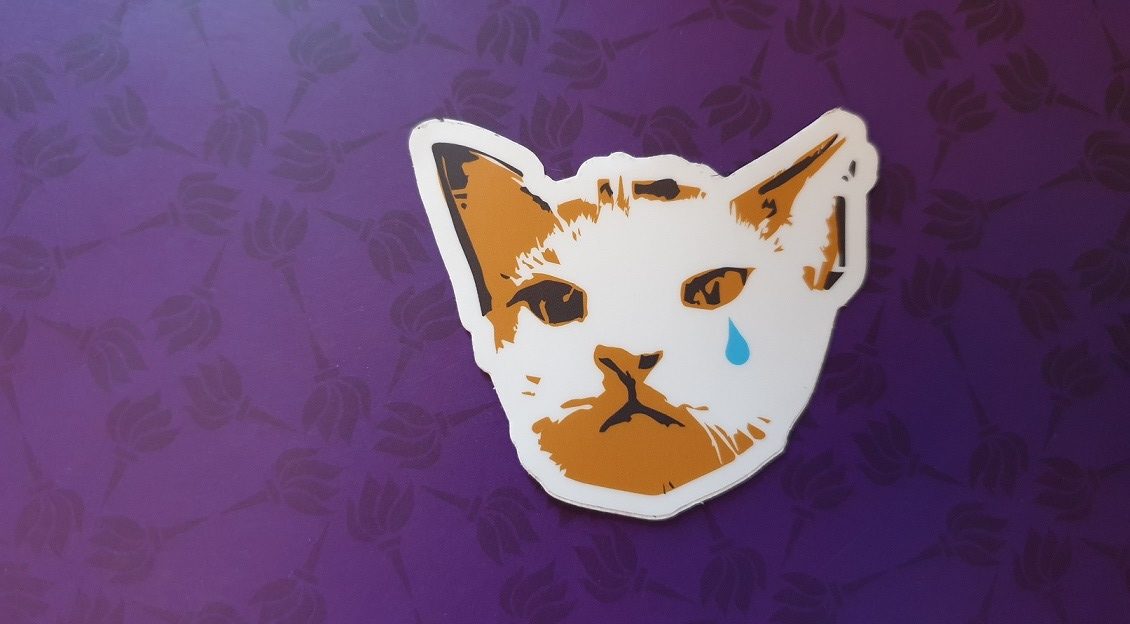
Campaigning for their rights over the years, EDS students have printed Streetcat’s likeness on stickers, T-shirts, and pins. They distribute paraphernalia across the campus in support of the Studio’s open door philosophy. Her little feline face, sporting a single tear, makes “a statement against over-regulation,” says Karau. Streetcat’s continued presence in the EDS is a sign of renewed liberty.
A Unique Working Philosophy

Participants who join the Engineering Design Studio soon discover that being “good enough” for an undergraduate is not enough. “Their project should just be GOOD,” says Karau. They should indeed hold themselves to a higher standard. Students will step outside an isolated and sheltered school environment and into reality. For instance, those exploring the local mangroves, pick up the phone and reach out to specialists around the planet to get their perspective. Others connect with NASA to share common experiences.
Into the Real World
The EDS pushes people to go beyond making things. To go beyond what is seen as “design thinking.” Above all, students have to use critical thinking, questioning projects while producing calculations. The actual hands-on work is subsequently outsourced to specialists and professionals. The goal is to help students “get smarter about the way the world really works,” says Karau.
Applying the EDS Principles
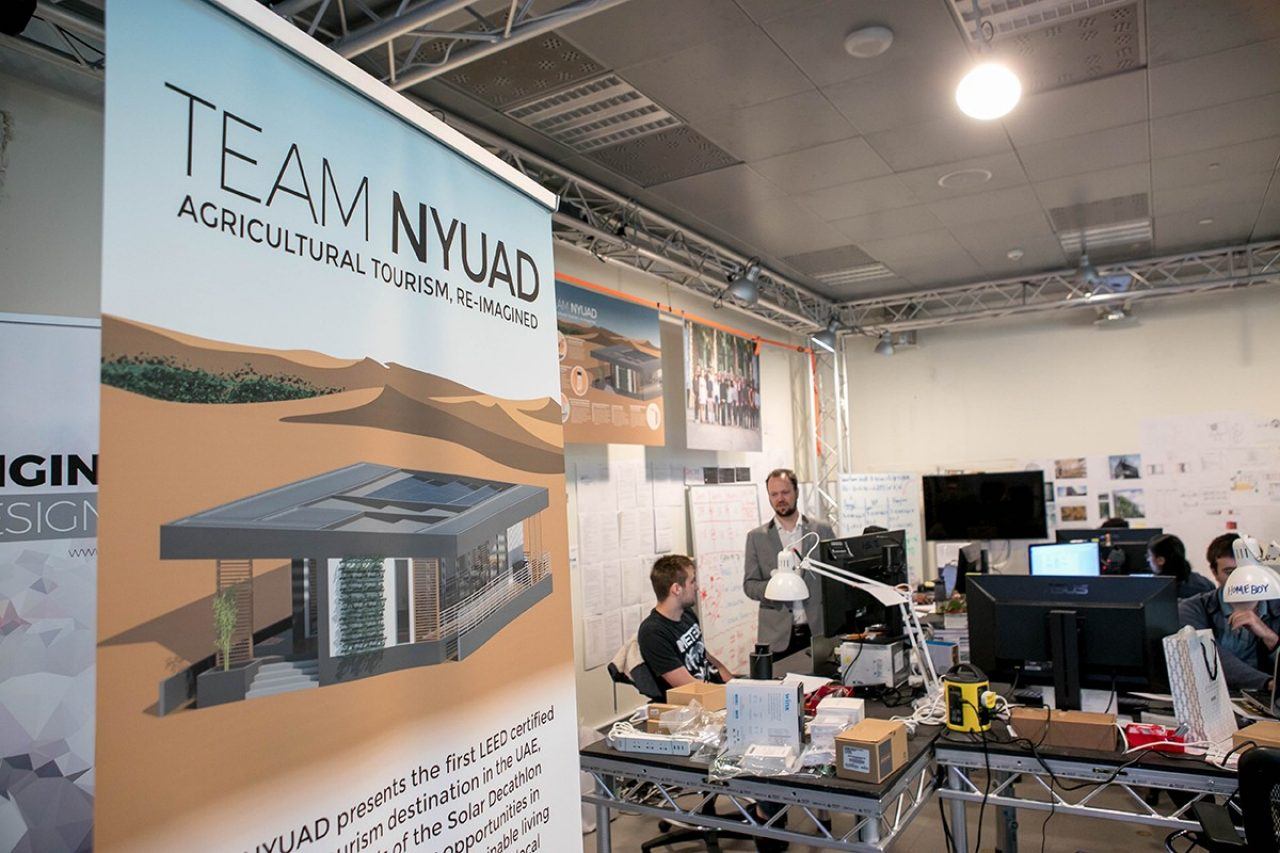
The Agricultural Tourism, Re-Imagined project of Team NYUAD is an excellent example of the impact the Engineering Design Studio philosophy has on its students. A group of second- and first-year students were keen to enter the 2018 Solar Decathlon Middle East international competition. They were looking to design, build and operate grid-connected, net-zero energy consumption houses.
Finding Your Vision
Early on, team members shook off their academic preconceptions about what a sustainable house should look like. They had to learn to shape a clear vision and become “precisely ambiguous,” says Karau. The students themselves drafted a 300-page document with their recommendations. They had to be absolute and flexible at the same time.
In short, the team wanted to conceive a lived-in house, functional in a desert landscape. On the other hand, the house would also need to be aesthetically pleasing. What it would never be was a meaningless model built to impress at competitions.
From Concept to Execution

Partnering with more than 40 companies, Team NYUAD raised around $700,000 in funds. The students managed a smooth procurement process while taking advantage of marketing opportunities offered by their partners. Local experts in their fields then built the house based on the team’s specifications. Over three years, outside of class time, passionate NYU Abu Dhabi students created the first solar-powered agricultural tourism destination in the UAE. It will now be displayed at Expo 2020 in Dubai.
This project highlighted within the region what NYU Abu Dhabi students and the Engineering Design Studio are capable of. As a result, the community understood the expertise and flair of enthusiastic NYU Abu Dhabi students. The way the team approached the competition represents what the EDS stands for: a sense of dedicated engagement and freedom of thinking.
Streetcat would be so proud!

Visit our website to find out more about Matthew Karau and the Engineering Design Studio at NYU Abu Dhabi.
